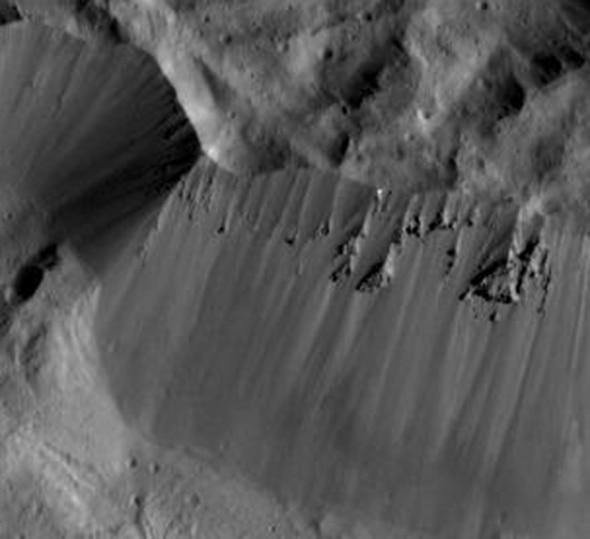Create a free profile to get unlimited access to exclusive videos, sweepstakes, and more!
The White Spots on Ceres Aren’t the Only Weird Thing There

When I was kid, we didn’t know nearly as much about asteroids as we do now. This was before we had spacecraft visiting them, really high-res radar observations, and all the other amazing tech we have now. I’m not saying we knew nothing—quite a bit was understood—but things have changed a lot since then.
For example, for two centuries we thought of Ceres as the largest asteroid, but now planetary scientists are starting to think of it as a protoplanet, an object that was well on its way to becoming a full-fledged planet before it stopped growing. That makes it easier to think of it as a world, with diverse landscape and layered history.
And also a lot of really weird stuff.
You’ve probably seen pictures of the crater Occator, the large 90-km-wide crater with the bright spots in the center that are likely to be salt deposits. Ceres has a mantle of water ice under its surface, probably briny, and it sometimes forces its way up and out onto the surface, leaving behind the bright deposits.
But a new image from the Dawn spacecraft shows that the crater center isn’t the only spot to which we should be paying attention.
The image above shows a section of the northern rim of Occator. At first, I wasn’t too surprised by what I saw. A sharp edge, piles of debris at the rim wall’s base indicating landslides over the eons, and so on.
Then I saw the fingerlike features high up along the rim wall. Were those … gullies? Well, that would be cool! Maybe we’re seeing water ice sublimating, I thought, turning into gas and dislodging debris that would then roll down the wall. We see things like that on Mars, so this would be a big scientific discovery!
But then I looked again. And again … and that’s when I noticed something very odd.
Look at the crater above the rim, to the right of center. See the shadow? The shadow is on the right, which means the Sun is shining from the right. If you look around the image you’ll see plenty of confirmation of that.
Now look again at the “gullies.” See it? The shadow of these features is on the left. That means they aren’t features dug into the surface, they’re actually popping out from the surface like hills!
What. The. What.
I thought I was losing it, so I contacted my friend, fellow science communicator, and Ceres enthusiast Emily Lakdawalla, who confirmed what I was seeing. These are things sticking up like hills, not dug down like gullies.
What a relief!* I wasn’t seeing things. But this brought up another problem: What are they?
My first thought was that there must be deposits of tougher material under the surface, but I wasn’t sure how that might work for these features. Emily gave me some ideas, and now I wonder …
Over time, the softer material making up the rim wall slides down, leaving the stronger stuff sticking out a bit. I’ve seen this sort of thing myself in the field; for example a limestone deposit over softer clay. As the clay crumbles and slides down the slope, the limestone sticks out making a ledge. If the tough layer has softer stuff above it as well, that material will flow down around the outcropping. In the very low gravity of Ceres (only 2 percent of Earth’s!) the material could pile up above the obstacle, creating a vertical ridge. Some of the material could continue around it to flow downward, then hit a second outcropping and so on, forming the tributarylike fingers.
Note the wide streaks that continue down the rim wall past the outcroppings, too, indication that flow continued. Although, weirdly (a word I use a lot when writing about Ceres) you can see the large piles of debris at the bottom of the rim under the left group of outcroppings, but on the right there’s just a small rounded lip running along the bottom. I’m not sure why that would be. Perhaps some later event removed them.
Mind you: I’m totally guessing here. I completely absolve Emily if I’m wrong, and give her complete credit if this is right! That’s only fair.
But the overarching point here is that Ceres, like any body on the solar system, has similarities to Earth (mass wasting, landslides, and so on) but is also very different (lower gravity, no air, much colder, etc.). Intuition can’t necessarily be trusted, but it’s not a bad place to start.
Every answer to a scientific puzzle starts off with a simple phrase: “What if…?” Where you go from there depends on the evidence, what we already know to be true, and imagination. But those two words are a great place to jump off.
Tip o’ the talus to NASA’s Dawn Mission.
* HAHAHAHAHAHA! Get it?


























